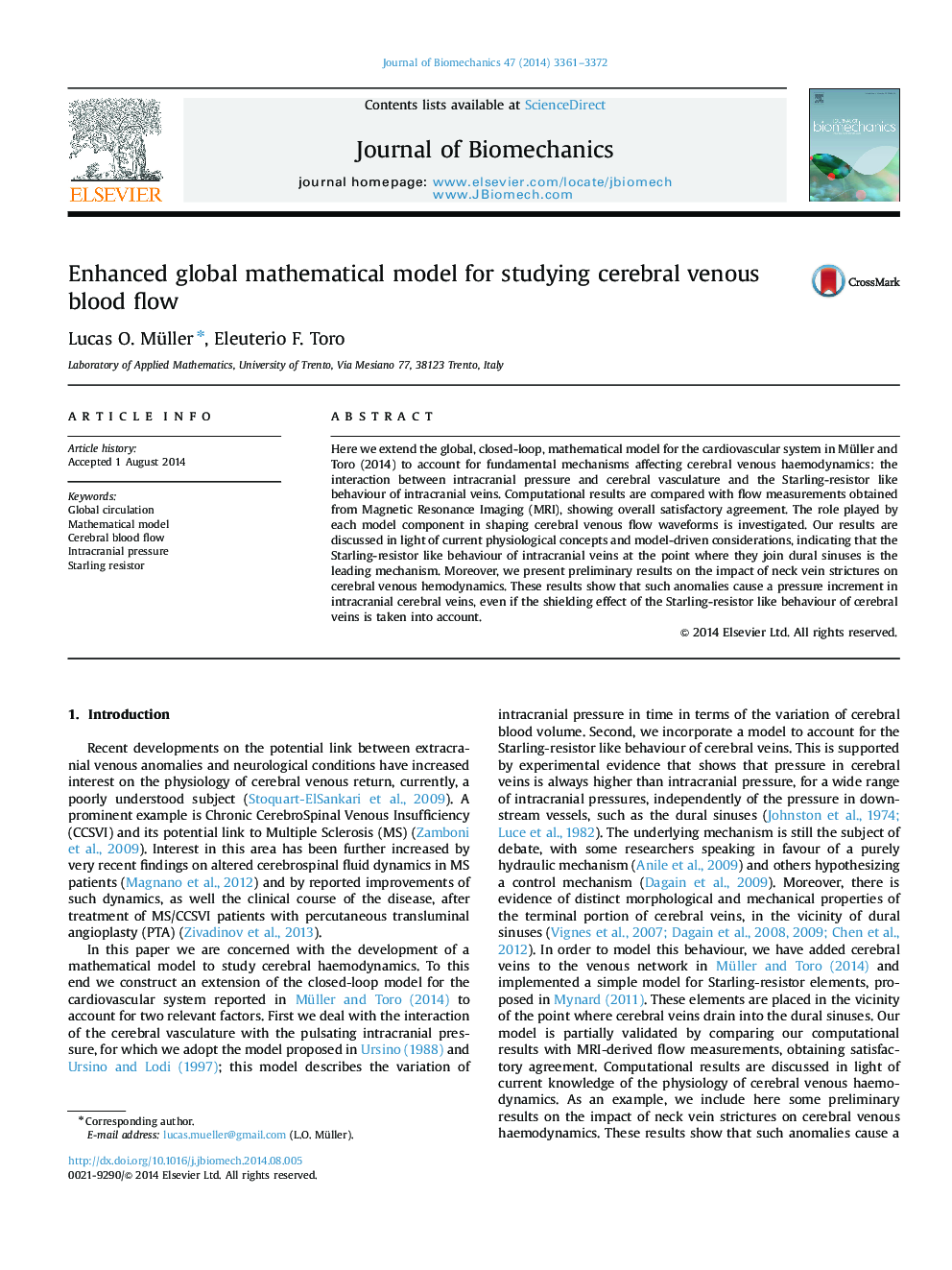| Article ID | Journal | Published Year | Pages | File Type |
|---|---|---|---|---|
| 10431936 | Journal of Biomechanics | 2014 | 12 Pages |
Abstract
Here we extend the global, closed-loop, mathematical model for the cardiovascular system in Müller and Toro (2014) to account for fundamental mechanisms affecting cerebral venous haemodynamics: the interaction between intracranial pressure and cerebral vasculature and the Starling-resistor like behaviour of intracranial veins. Computational results are compared with flow measurements obtained from Magnetic Resonance Imaging (MRI), showing overall satisfactory agreement. The role played by each model component in shaping cerebral venous flow waveforms is investigated. Our results are discussed in light of current physiological concepts and model-driven considerations, indicating that the Starling-resistor like behaviour of intracranial veins at the point where they join dural sinuses is the leading mechanism. Moreover, we present preliminary results on the impact of neck vein strictures on cerebral venous hemodynamics. These results show that such anomalies cause a pressure increment in intracranial cerebral veins, even if the shielding effect of the Starling-resistor like behaviour of cerebral veins is taken into account.
Keywords
Related Topics
Physical Sciences and Engineering
Engineering
Biomedical Engineering
Authors
Lucas O. Müller, Eleuterio F. Toro,
